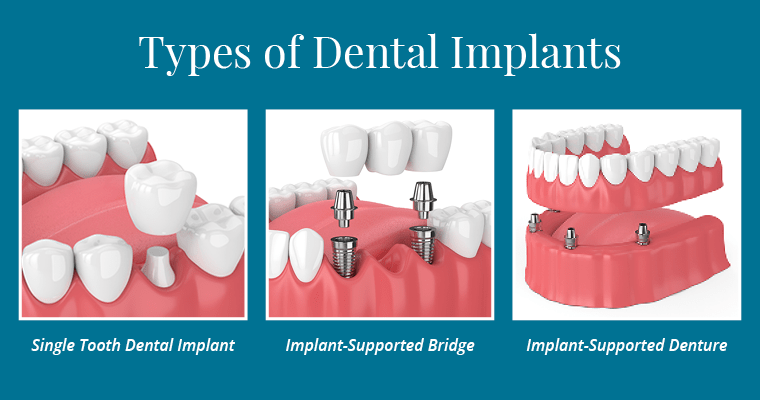Some Known Factual Statements About Dental Sense
Table of ContentsRumored Buzz on Dental SenseThe Only Guide to Dental SenseHow Dental Sense can Save You Time, Stress, and Money.Dental Sense Things To Know Before You Get This
are medical gadgets operatively dental implanted right into the jaw to recover an individual's capability to chew or their look. They provide support for artificial (phony) teeth, such as crowns, bridges, or dentures. When a tooth is shed because of injury or condition, a person can experience issues such as rapid bone loss, faulty speech, or changes to eating patterns that result in pain.Oral implant systems include a dental implant body and dental implant joint and may also include an abutment addiction screw. Cosmetic dentistry services. The oral implant body is surgically put in the jawbone in place of the tooth's origin. The dental implant joint is normally affixed to the implant body by the joint fixation screw and expands with gum tissues into the mouth to sustain the affixed man-made teeth
(https://dentalsense1.mystrikingly.com/blog/transform-your-smile-with-dental-implants-root-canal-procedures-and)Framework of The Oral Implant System picking oral implants, talk to your oral copyright concerning the possible advantages and threats, and whether you are a candidate for the treatment. Points to take into consideration: Your overall health is an essential consider figuring out whether you are a great prospect for dental implants, for how long it will take to heal, and the length of time the implant might remain in location.
Cigarette smoking may affect the recovery process and decrease the lasting success of the dental implant. The healing process for the dental implant body may take several months or longer, throughout which time you typically have a temporary joint in location of the tooth. the dental implant treatment: Thoroughly comply with the oral hygiene instructions given to you by your oral company.
Not known Details About Dental Sense
Implant failing can cause the requirement for another surgery to deal with or replace the implant system. Recovers the ability to eat Recovers aesthetic appearance Assists keep the jawbone from reducing due to bone loss Maintains the health of the bordering bone and gum tissues Aids keep nearby (neighboring) teeth stable Boosts lifestyle Damages to bordering all-natural teeth throughout implant placement Injury to the surrounding cells during surgery, such as sinus perforation Injury throughout surgery (as an example, crack of bordering jawbone) Inadequate function, such as feeling like the teeth do not bite together normally A feeling that the tooth hangs or turning in position resulting from an abutment screw loosening Implant body failing (looseness of the dental implant body) because of systemic infection, which might be most likely in individuals with uncontrolled diabetics issues as a result of neighborhood infection in bone and gums supporting the dental implant body as a result of postponed recovery, which might be most likely in clients who smoke Trouble cleansing the gum tissues around the dental implant, leading to bad oral health Untreated periodontal condition Post-surgical feeling numb as a result of nerve impingement or damages Constantly inform health and wellness care companies and imaging specialists that you have oral implants prior to any magnetic vibration imaging (MRI) or x-ray procedures.
FDA is not knowledgeable about any kind of negative events reported for MRI or x-ray procedures with oral implants. Dental implants systems are usually made from products that comply with international agreement requirements of the International Organization for Standardization (ISO) or ASTM International. These criteria have details of what makes a safe material.

A dental implant is a framework that changes a missing tooth. With screw-like tools, the click reference specialist inserts an implant right into the jawbone, and it functions as a support for an artificial tooth, called a crown. A tool called an abutment links the artificial tooth to the oral implant. The crown is customized to fit the individual's mouth and match the shade of their teeth.
See This Report on Dental Sense
Some individuals are not qualified for oral implant surgery. It is for dental specialists to operate on individuals with: severe illnessuncontrollable metabolic diseasebone or soft cells condition or infectionIf these issues are settled, a person can have the surgical treatment. In, dental cosmetic surgeons avoid running on individuals with: If individuals with any of the above undertake dental implant surgery, there is a higher risk of the implant falling short.

Dental implant surgical procedure is a customized procedure. It's not the very same for everyone. The following provides a basic review of what you can expect your dental practitioner, dental specialist, periodontist or prosthodontist to do: Position the dental implant operatively. Give you time to recover. Attach the article and final crown, bridge or denture.
Next off, your surgeon will thoroughly put the oral implant right into your jaw. Your doctor will certainly rearrange your periodontals and shut the laceration with stitches. If your dental implant is near the front of your mouth, your dental professional will make a short-term tooth for you to use until you heal. In this way, you won't have a gap in your smile while you recover.
6 Simple Techniques For Dental Sense
Throughout the healing phase, your jawbone should fuse to the dental implant. This procedure can take anywhere from three to nine months.
As soon as your dental implant heals, your dental expert can affix the abutment (tiny adapter post) and your final remediation (crown, bridge or denture). This usually takes concerning one hour to complete and may need a second small surgical procedure. You should not feel any type of pain throughout your oral implant procedure since your provider will make use of drug to numb your gum tissues.